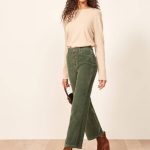How customers’ needs for comfort, diversity and niche style change the shape of the underwear industry – from big brands to start-ups.
The underwear market is changing. Due to the growth of consumer demand, it was once dominated by a few big-name brands, and the underwear market is diversifying as consumer demand grows.
Market research firm Mintel predicts that the UK industry will grow by 11.4% from 2016 to 2021 to reach £3 billion. Moreover, as it evolves, brands are responding to changing consumer demands and reflecting a wider range of industry needs to offer a wider variety of styles, shapes, sizes and colors.
Underwear is often accompanied by a romantic, sexy aesthetic: restrained details, sensual lace making and seductive contours. While this is still a popular and dominant trend – brands such as British Furong, Coco de Mer and Dora Larsen are booming – other market segments are also growing.
Seeking comfort is a growing concern for lingerie shoppers, as shoppers prefer to use softer clothing such as T-shirt bras.
How customers’ needs for comfort, diversity and niche style change the shape of the underwear industry – from big brands to start-ups.
More from: Pushing the limits of LINGERIE
The underwear market is changing. Due to the growth of consumer demand, it was once dominated by a few big-name brands, and the underwear market is diversifying as consumer demand grows.
Market research firm Mintel predicts that the UK industry will grow by 11.4% from 2016 to 2021 to reach £3 billion. Moreover, as it evolves, brands are responding to changing consumer demands and reflecting a wider range of industry needs to offer a wider variety of styles, shapes, sizes and colors.
Underwear is often accompanied by a romantic, sexy aesthetic: restrained details, sensual lace making and seductive contours. While this is still a popular and dominant trend – brands such as British Furong, Coco de Mer and Dora Larsen are booming – other market segments are also growing.
Seeking comfort is a growing concern for lingerie shoppers, as shoppers prefer to use softer clothing such as T-shirt bras.
click here
Katie Smith, director of retail analysis and insight at retail data research firm Edited, explains: “In every fashion category, we see an increase in demand for comfort and functionality, especially in the characteristics of underwear.” “Underwear category Soft lines have grown dramatically, including sports bras, triangle bras and wireless bras – this year’s UK retailer inventory increased by 3,000% compared to the same period in 2015.
“People are looking for comfort,” said Debbie Duckett, the purchasing director of Brooks Avenue, who owns 29 stores in the UK. “We just launched an 18-year-old autumn T-shirt bra with a super soft cup lining and a soft-seal hook-and-eye closure. It has a soft back and no bones, so you won’t bend on the side.” Duckett also marks the retailer The strong performance of the casual bra, which is a non-linear bra, she calls “ideal weekend or travel.”
However, Sophie Charlesworth, brand manager for Intimates Lingerie, a lingerie agency representing brands such as Hanro, Commando, DKNY and Echo, points out that customers’ expectations are beyond comfort: “Customers want to feel comfortable in their underwear, but they also like to wear luxurious fabrics. Both breathable and feminine – and give them support.
“Women choose to wear a second layer of skin when choosing underwear. The softer, more comfortable lines in the rim bra feel like you are wearing a soft cup, and now the elasticity of the underwear can make the bra more than the previous design. More comfortable.”


